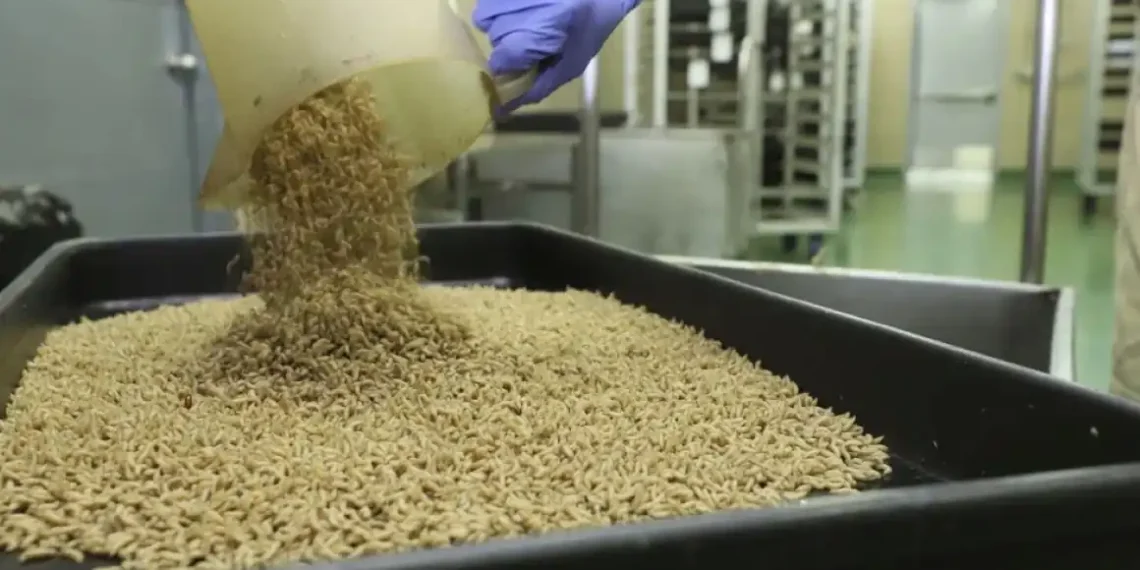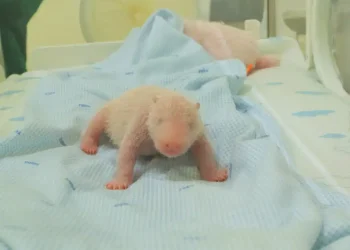The US is Dropping Flies from the Sky—Here’s Why
The U.S. government is ramping up an unconventional defense plan to stop a deadly parasite: it’s breeding billions of sterile flies and dropping them from airplanes over southern Texas and Mexico.
It sounds bizarre—like something out of a sci-fi movie—but this time-tested method is aimed at halting the spread of the New World screwworm, a flesh-eating maggot that poses a serious threat to livestock, wildlife, and even pets.
Officials fear a recent reemergence of the pest could devastate the American beef industry if it spreads. So, the USDA is stepping in with a $30 million plan to breed and release sterile male flies to break the pest’s reproductive cycle.
A Flesh-Eating Threat Returns
Unlike typical fly larvae that feed on dead tissue, screwworm maggots consume live flesh. The female screwworm fly lays eggs in open wounds or mucus membranes of warm-blooded animals—cattle, horses, pets, and even humans.
Once hatched, the larvae burrow into the host’s tissue, causing extreme pain, infection, and potentially death. A single untreated cow can die within two weeks.
“This isn’t just an economic threat,” said Michael Bailey of the American Veterinary Medicine Association. “It’s a horrific one for animal welfare too.”
The Science Behind the Sterile Fly Strategy
To stop the spread, scientists are turning the fly’s biology against itself.
- Sterile male flies are bred in labs and exposed to radiation to ensure they can’t reproduce.
- These males are then released into the wild, where they mate with females, whose eggs fail to hatch.
- Since female screwworm flies mate only once in their short lives, the technique dramatically reduces the population.
“It’s one of the all-time great examples of science solving a major agricultural problem,” said Edwin Burgess, a University of Florida parasitologist.
This strategy helped wipe out screwworms across the U.S. and parts of Central America decades ago. But the pest reappeared in southern Mexico last year, triggering new alarms.
Building Fly Factories for the Fight
The USDA currently relies on a sterile fly factory in Panama, capable of producing 117 million flies per week. But with the threat growing, that’s no longer enough.
What’s Next:
- A new breeding facility will be built in southern Mexico by July 2026.
- A fly distribution center in Texas is expected to open by the end of this year.
- The USDA aims to boost production capacity to 400 million flies weekly.
Former fly factories in Florida and Texas were shut down after the pest was declared eradicated. Now, some experts argue those closures were premature.
“Victory can be fleeting,” said Burgess. “We need to be ready for the pest to return.”
How Flies Are Raised—and Dropped
Raising flies by the hundreds of millions isn’t as easy as it sounds.
Female flies require the right cues to lay eggs, and larvae need protein-rich diets. Early fly factories used horse meat and honey. Today, mixes of egg powder, cattle blood plasma, and sawdust help mimic natural development.
Security is key. Only sterile flies must escape. Any fertile fly slipping out could reignite the problem.
Once mature, crates of sterile flies are loaded into small planes and released mid-flight across targeted zones. Though efficient, it’s risky: a recent crash near the Mexico-Guatemala border killed three during a fly drop mission.
Despite dangers, the method has proven effective since its debut in the 1950s, when USDA scientists dropped flies from paper cups using hand-built chutes.
Why This Matters
The U.S. temporarily closed its southern border to live animal imports in May to prevent further spread of the parasite. The closure remains in effect until at least mid-September.
If not controlled, the screwworm outbreak could devastate ranching economies and put wildlife and pets at risk across the American South.
The fly-drop program may sound strange, but it’s a powerful weapon in the USDA’s pest-control arsenal—one they hope won’t need to be used often, but must always be ready.
This article was rewritten by JournosNews.com based on verified reporting from trusted sources. The content has been independently reviewed, fact-checked, and edited for accuracy, neutrality, tone, and global readability in accordance with Google News and AdSense standards.
All opinions, quotes, or statements from contributors, experts, or sourced organizations do not necessarily reflect the views of JournosNews.com. JournosNews.com maintains full editorial independence from any external funders, sponsors, or organizations.
Stay informed with JournosNews.com — your trusted source for verified global reporting and in-depth analysis. Follow us on Google News, BlueSky, and X for real-time updates.














